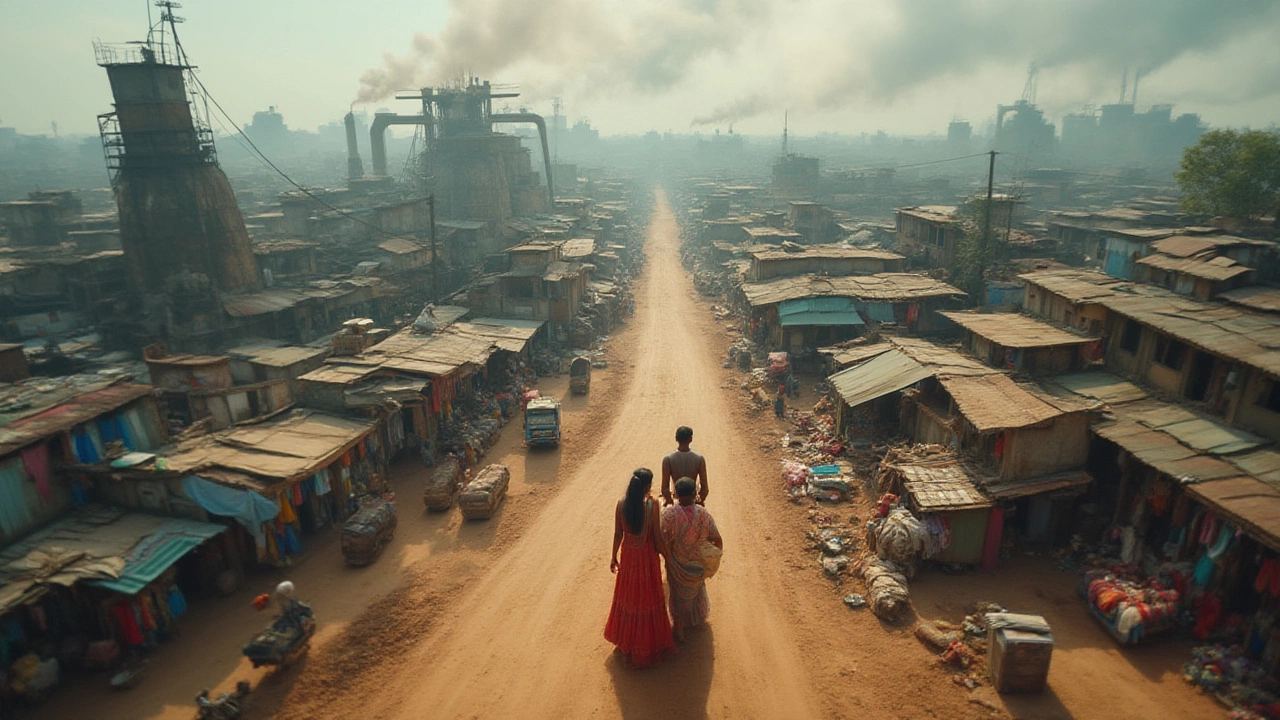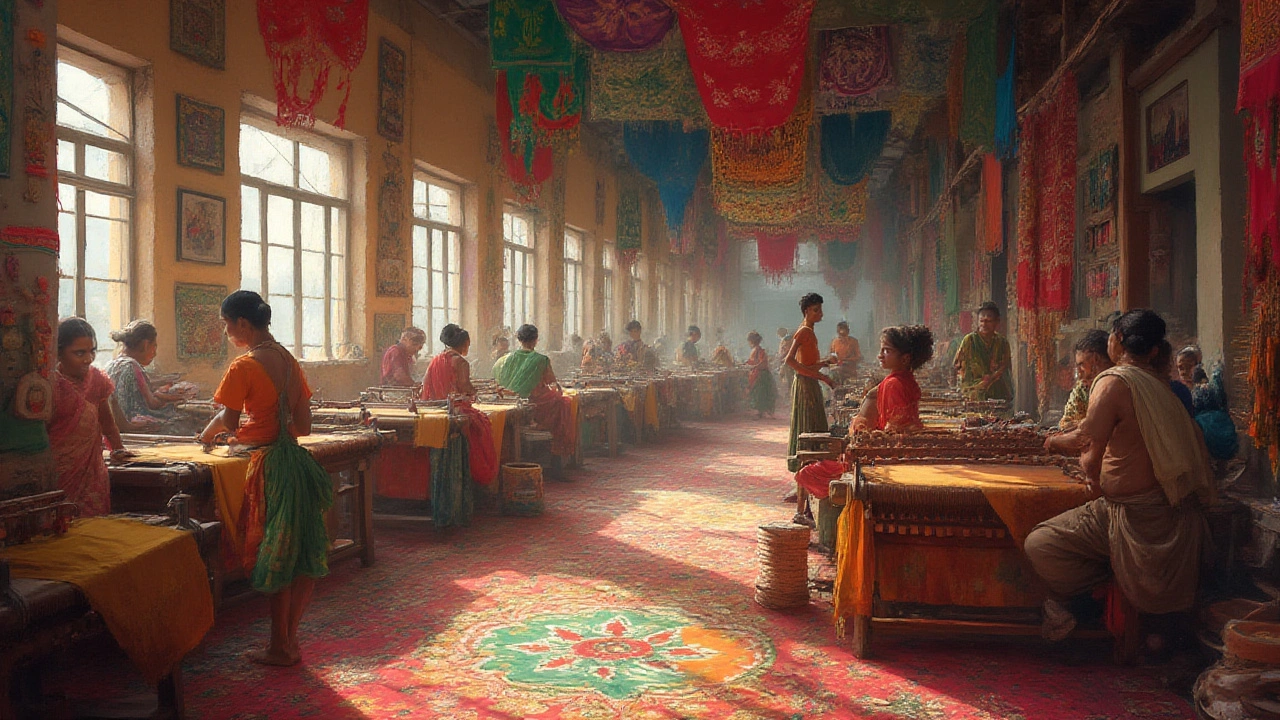If you ask anyone who’s ever bought a T-shirt or a pair of jeans, there’s a fair chance those threads started life in India. But just how many textile manufacturing companies are out there in India right now? The answer might shock you—it’s not just in the hundreds or thousands, but in the hundreds of thousands. We’re talking about a gigantic network with deep roots, from dusty family workshops in the backstreets of Surat to gleaming tech-driven factories in Tamil Nadu. This industry isn’t just about making clothes; it’s the backbone for millions of jobs and a colossal force in India’s economy. Wondering why there’s so much buzz around these numbers, who these companies are, and how the sector manages to scale such dizzying heights? Let’s pull back the curtain on one of India’s most iconic industries, and see what’s really going on beneath the surface.
The Size of India’s Textile Manufacturing Sector
To get a grip on just how big the Indian textile manufacturing sector is, you have to look at the numbers. As of early 2025, there are approximately 4.5 lakh (450,000) textile manufacturing companies spread across the country. Sounds wild? It is. These businesses aren’t all massive factories—actually, around 80% are small and medium enterprises (SMEs), with many passed down through generations. You’ll find these companies everywhere, from big industrial hubs like Mumbai and Ahmedabad to quieter towns like Tiruppur, which churns out t-shirts by the truckload.
Let’s look at it in figures:
| Region | No. of Textile Manufacturing Companies |
|---|---|
| Gujarat | ~90,000 |
| Tamil Nadu | ~80,000 |
| Maharashtra | ~67,000 |
| West Bengal | ~52,000 |
| Rajasthan | ~41,000 |
| Others | ~120,000 |
Why so many companies? Well, the textile sector is super diverse—cotton, wool, silk, jute, synthetics, and blends all need different skills and setups. Plus, India has a powerful tradition of handlooms and handicrafts, so you get everything from automated weaving units to living-room saree workshops. The government also chimes in with initiatives like the Production Linked Incentive (PLI) Scheme and cluster-based approaches, creating a healthy ecosystem for both corporate giants and family-run stalls.
Here’s something even more eye-opening: collectively, these companies make India the world’s second-largest textile producer (after China), with textiles and apparel exports crossing $44 billion in 2023-24. The sector accounts for about 14% of India’s total industrial production and roughly 12% of its export earnings. And let’s not forget it’s a massive employer—over 45 million people, making the industry second only to agriculture when it comes to workforce size. In short, textile manufacturing isn’t just a business in India; it’s lifeblood in motion.
What Exactly Counts as a Textile Manufacturing Company?
You might wonder, what does it take for a business to get called a ‘textile manufacturing company’ in India? Is it only about massive factories and export houses? Not really. In India, this term covers a mind-boggling range of operations. Here’s what fits under the hood:
- Spinning units: These turn raw fibers like cotton and polyester into yarn.
- Weaving and knitting mills: Where yarn gets woven into fabric or knitted into material for t-shirts, socks, and more.
- Processing houses: Where fabric gets dyed, printed, or finished to add patterns, softness, or special properties.
- Garment manufacturers: The folks who cut and stitch the final product—your shirts, jeans, kurtas, and dresses.
- Handloom and powerloom units: This is where traditional and semi-mechanized weaving happens, giving us everything from Banarasi sarees to bedsheets.
- Specialty manufacturers: Think of companies making home textiles, technical textiles, or artisanal fabric for export.
So, when you read ‘company,’ don’t picture only fancy glass buildings with boardrooms. Sometimes it’s a workshop on the edge of a village, or a group of weavers working in a cooperative, or a medium-sized urban factory run like clockwork by cousins and uncles. Over the last decade, strict quality standards have pushed many SMEs to modernize, switch to eco-friendlier processes, and use high-tech weaving, dyeing, or embroidery machines.
Many of these companies are registered with state textile authorities, the Ministry of Textiles, or under general industrial acts. Others operate as partnerships, limited companies, proprietary firms, or as cooperatives. There’s also a vibrant, partly-organised, partly-unorganised setup—unique to India—where a lot of garment work actually happens in homes, especially for hand-crafted products.
This is why the estimate of 4.5 lakh companies can swing a bit, depending on whose data you trust: some exclude tiny sole-proprietorships or unregistered units, while others count every loom and cottage industry. But make no mistake—thousands of new textile companies spring up every year, while plenty more are born, re-invented, or consolidated every single month.

Spotlight: Major Players and Regional Hotspots
You’d expect the biggest numbers to come from the usual suspects—Gujarat, Maharashtra, Tamil Nadu, and Punjab—with each region putting its own twist on what textile really means. Let’s talk about key hotspots and some showstopper companies.
Tamil Nadu, for instance, isn’t just famous for filter coffee but is also home to Tiruppur, a global hub for knitted garments. More than 9,000 garment manufacturing companies operate out of Tiruppur alone—some making shirts for global retailers like H&M, Zara, or even supermarket chains in the UK and US. Ahmedabad and Surat in Gujarat see a flurry of activity around synthetic fabrics and sarees. Ludhiana, nestled in Punjab, is a stronghold for woolen apparel—think sweaters, shawls, and knitwear. Even Kolkata, famed for jute and home-textiles, has seen a steady growth in both home-grown and international companies tapping into the export market.
If you’re looking for names, a few giants stand out:
- Vardhman Textiles (spinning and weaving)
- Reliance Industries (polyester yarn, polyester fibers, synthetic fabric, and apparel)
- Raymond Ltd. (premium suiting, readymade apparel)
- Arvind Ltd. (denim, khakis, and broadcloth)
- Alok Industries (yarn to garments—integrated group)
- Welspun India (home textiles—towels, bedsheets, exports to Walmart and IKEA)
- Trident Group (yarns, towels, bedsheets)
But don’t let the names fool you—at least 90% of Indian textile manufacturers aren’t household names. They’re the backbone of daily commerce. Take Sanganer in Rajasthan, for instance: it’s home to thousands of tiny printing units that churn out the famous Sanganeri block-prints seen in high-street boutiques. Or look at the northeast: clusters in Assam and Manipur are reviving indigenous textile crafts, giving unemployed youth a leg up.
Another fact to blow your mind: India exports textiles to more than 150 countries, and you’d find ‘Made in India’ tags on everything from boutique French scarves to American bedsheets. The real diversity comes not just from the scale, but the dizzying variety of techniques, traditions, and market links, old and new.
Industry Challenges, Government Boosts, and What the Future Holds
No article on India’s textile companies is complete without tackling the bumps in the road. For starters, the sector can be a maze of red tape—different states have their own rules, and getting clearance for pollution, labor, or fire safety can slow even big names. The industry also faces fierce international competition, especially from Bangladesh and Vietnam, who sometimes woo global buyers with lower prices, tax breaks, or faster shipping times.
Labour issues—think low wages, skill gaps, or seasonal migration—have been a longstanding challenge. SMEs often struggle to invest in new technology or meet international ‘green’ standards, holding back their progress. Power cuts, fluctuating cotton prices, and reliance on imported machinery all chip away at the bottom line. COVID-19 (remember those days?) knocked the wind out of production and exports for almost two years, and while the sector has bounced back hard, the lessons have stuck: adapt or perish, digitize or fall behind.
On the flip side, there’s a never-ending stream of government push to keep the sector humming. Initiatives like the Textile Park Scheme, Integrated Skill Development Scheme, and special export incentives keep things interesting. PLI Schemes launched in 2021 set aside upwards of Rs 10,000 crore to promote man-made and technical textiles—so there’s a bigger payout if you make athleisure, high-performance outdoor gear, or even materials for healthcare or construction.
Sustainable textiles and circular economy models are the new buzzwords. Indian brands are investing more in eco-friendly dyes, recycled fibers, and zero-liquid-discharge factories. Big and small companies are jumping on the solar power bandwagon to cut costs and carbon footprint. Consumers now look for ‘Made in Green’ or BCI (Better Cotton Initiative) labels.
Ask anyone on the inside: The next wave is going digital—AI-powered design, e-commerce, supply-chain tracking, and big data analytics to predict trends and prevent unsold stocks. SMEs get access to online marketplaces, linking them to buyers in Japan, Australia, or even Peru.
If you’re thinking of diving into India’s textile world—as a trader, an entrepreneur, or even a job-seeker—the odds are in your favour. This industry doesn’t sleep. More companies, newer crafts, and even bigger exports are guaranteed for years to come, no matter which city you land up in or what fashion trend goes viral next.
One final tip: whether you're searching for an investment opportunity, a job, or the next big business idea—keep an eye on this sector. It’s wild, unpredictable, and massive—but above all, it’s woven tightly into the fabric of India’s future, one textile manufacturing India dream at a time.
